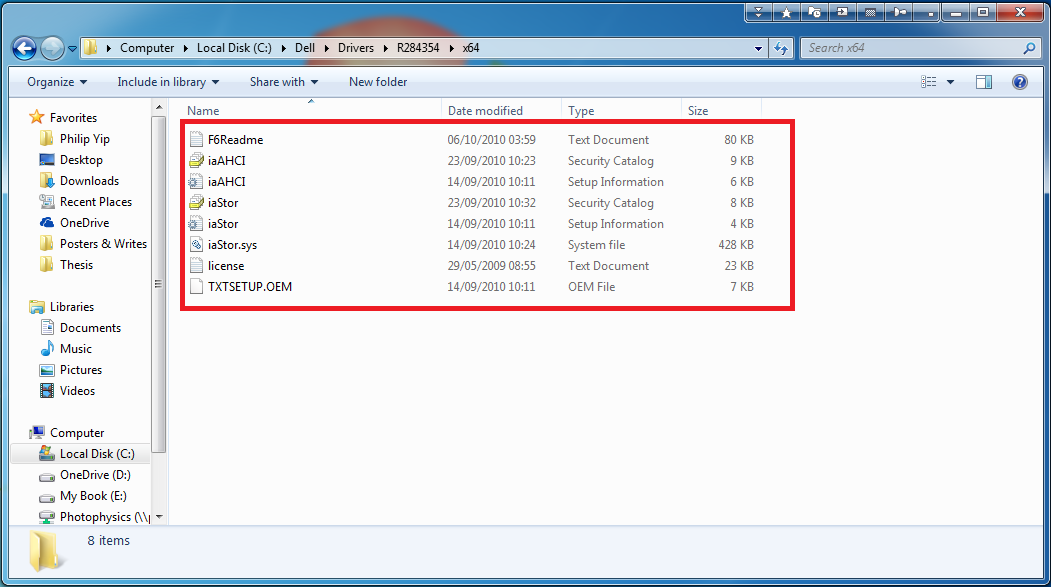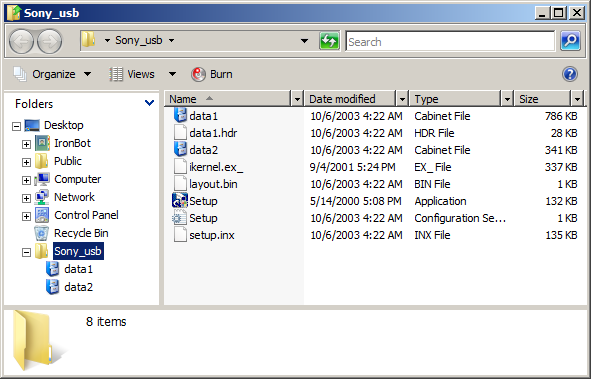Windows Usb Driver Location
To install thedriver manually, follow the directions below:.Connectthe UniStream device to the PC using the USB cable.TheFound New Hardware Wizard opens; click Cancel.Onthe UniLogic ribbon, select PLC and then click Communication.TheDiscovery window opens, ensure that USB is selected.If the USB driver is not installed, this information appears inthe window; click on the hyperlink 'Click Here' as shownin the following figure.Duringthe driver installation process, Windows may raise questions abouttesting and compatibility. Select Continue Anyway.Whenthe driver installation is complete, Discovery will begin searchingfor Hardware. When Discovery finds the connected UniStream device,it will appear in the list; and may be selected as the CommunicationTarget.After you installUniLogic, connect your UniStream to your PC; and then openDevice Manager.The connected UniStream will appear as a USB Serial Device;right-click it and select Update Driver Software.Select Browse mycomputer software; then click Browse.Click Have Disk,and then navigate to the driver location, typicallyC:ProgramDataUnitronicsUnLogicDriversand then click Open.The correct drivershould now appear under Model, click next to install it. IfInstallation is successful, Windows displays a Success message.Check Device Manager;the driver should now be listed under Network adapters.If the drivers are installed, but you are still unableto establish UniStream - PC communications via USB, check if your PC isrunning programs that control the function of your PC USB port.If this is the case, you may need to suspend the program or un-installit.If the procedures above do not work, please contactSupport.

The cases of USB devices not working in Windows 10 is more commonly reported after a Windows update. However, this problem can occur at any other time and you will find below the steps to fix the problem of USB Device Not Working in Windows 10.USB Device Not Working in Windows 10The problem of USB Device not working in Windows 10 might be related to various issues, ranging from outdated device drivers and power management settings to USB devices not loading or inconsistently loading on a Windows computer.Before going ahead with the steps to fix USB Device Not working issue in Windows 10, it is a good idea to rule out the possibility of the USB device itself being faulty. Remove the USB device from your computer and plug it into another computer and see if it works. If it works, the device is OK and you can follow the steps below to fix the problem on your computer. Power Flush ComputerThe problem of USB devices not working in Windows 10 could be due to minor software glitches or stuck programs and processes.1.

Power OFF your computer by pressing the Power button.2. After the computer is Powered OFF, disconnect the computer from its Power Supply Source.3. Wait for 5 minutes and Restart the computer 2. Uninstall Faulty Device Driver1.
Right-click on Start button and then click on Device Manager.2. On the Device Manager screen, expand the entry for Universal Serial Bus Controllers right-click on the Unknown Device and click on Uninstall Device option.3. On the confirmation pop-up, click on OK to confirm.4. Repeat the above steps for other affected devices (if any) and Restart your computer. Once your computer restarts, Windows 10 will automatically load the right drivers as required. Change Power Management Setting For USB Root HubIn order to save power, Windows 10 has a tendency to turn-off power supply for unused USB ports and this can cause the problem of USB device not working in Windows 10.1. Right-Click on Start button and click on Device Manager option.2.
Free Windows Usb Driver Download
On the device Manager Screen, right-click on USB Root Hub and click on Properties.3. On the Properties screen, click on Power Management tab and uncheck the option for “Allow the computer to turn off this device to save power” and click on OK.4. Matlab 2012b free download cracked. Repeat the above steps for other USB Root Hubs (If any) and Restart your computer. Disable Fast StartupWhile the Fast Startup feature in Windows 10 helps the computer to start in no time (YES! Faster than Mac), this feature can sometimes end up not loading USB devices or loading them inconsistently (ON and OFF).If you are noticing that sometimes USB devices work and sometimes do not, disabling fast startup can fix the problem on your computer1. Open Settings click on System icon.2. On the System screen, click on Power & Sleep in the left pane.

In the right-pane, scroll down and on Additional Power Settings Link.2. On the Power Options Screen, click on Choose What the Power Buttons Do link.3. On the next screen, scroll down to “Shutdown Settings” and uncheck Turn on fast startup option.4. Click on Save Changes button.Now, restart your computer and see if the USB device is now working on your computer.
Check For UpdatesSee if an Update is available for your computer. If an update is available, Windows will also install the latest available drivers for USB Ports on your computer.1. Click on the Start button Settings Icon Updates & Security.2. On the Update and Security screen, click on Windows Update in the left pane and then click on Check For Updates button.3.
Allow Windows to check for available updates and install them onto your computerIn case updates are available, the latest available device drivers will also be installed on your computer. Disable USB Selective Suspend SettingBy default, Windows computer is set to conserve power by suspending power supply to external USB devices, whenever they are inactive.However, this power saving setting can sometimes cause problems like and USB Device Not Recognized Error in Windows 10.1. Go to Settings System Power & Sleep, scroll down and click on Additional Power Settings Link.2. On Power Options screen, click on Change Plan Settings link located next to the current Power Plan.5. Next, click on Change Advanced Power Settings link.6. On the next screen, click on USB Settings USB selective suspend setting and select disabled option for “Plugged In” and also for “On Battery” in case you are using a Laptop.7. Click on OK to save above settings.